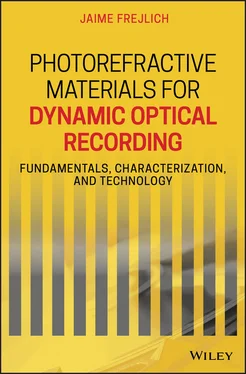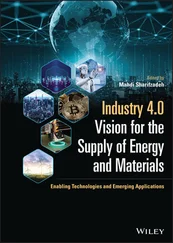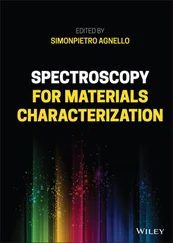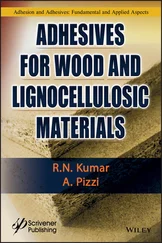Part V is an appendix where the physical meaning of some quantities closely related to photorefractives, such as Debye length, diffusion and mobility, as well as detailed practical techniques, such as how to measure diffraction efficiency of reversible holograms (which is a far from obvious matter), and even how to operate photodiodes and operational amplifiers for different light detection practical tasks, are discussed.
Campinas‐SP, April 2019
This book is the result of direct and indirect cooperation of colleagues from Brazil and all over the world who have contributed with their experience, work and advice, as well as graduate students working on their theses under my direction, or just spending some time at my laboratory at the State University of Campinas, Campinas‐SP, Brazil.
My warm acknowledgments to all of them:
| Araújo, William R. |
Arizmendi, Luis |
| Barbosa, Marcelo C. |
Bassewitz, J.P. |
| Bian, Shaopin |
Buse, Karsten |
| Carrascosa, Mercedes |
Capovilla, Danilo |
| Carvalho, Jesiel F. |
Cescato, Lucila H. |
| Freschi, Agnaldo A. |
Garcia, Paulo Magno |
| Hernandes, Antonio C. |
Inocente Junior, Nilson R. |
| Kamenov, V.P. |
Kamshilin, Alexei A. |
| Kip, Detlef |
Klein, Marvin |
| Krätzig, Eckhard |
Kulikov, V.V. |
| Kumamoto, R. |
Launay, Jean Claude  |
| Longeaud, Christophe |
Lorduy G., Hector |
| Montegegro, Renata |
Mosquera, Luis |
| Oliveira, Ivan de |
Odoulov, S.G. |
| Prokofiev, Victor V. |
Rasnik, Ivan |
Ringhofer, Klaus H.  |
Rupp, Romano A. |
| Salazar, A. |
Santos, Paulo Acioly Marques dos |
| Santos, Pedro Valentim dos |
Santos, Tatiane Oliveira dos |
| Schamonina, Ekaterina |
Shcherbin, K.V |
| Shumelyuk, A. |
Stepanov S.I. |
| Sugg, Bertrand |
Sturman, B.I. |
| Telles, A.C. |
Troncoso, L.S. |
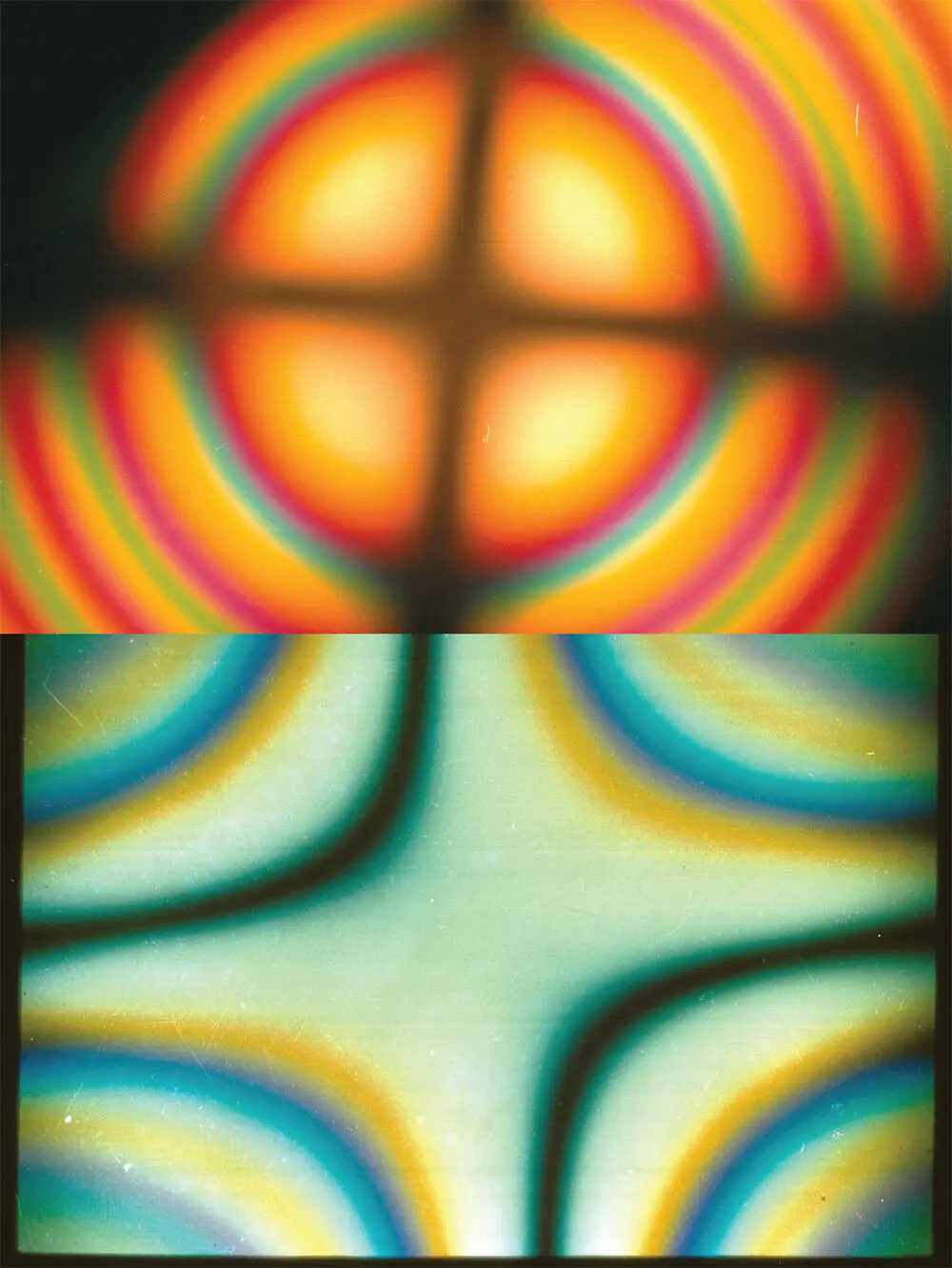
Figure 1 Naturally birefringent uniaxial lithium niobate crystal view under converging white light between crossed polarizers with its c ‐axis (optical axis) laying perpendicular to the plane (upper) and on the plane (lower).
Photorefractive crystals are electro‐optic and photoconductive materials. An electric field applied to an electro‐optic material produces changes in its refractive index; a phenomenon also called the Pockels effect. On the other hand, photoconductivity means that light of adequate wavelength is able to produce electric charge carriers that are free to move by diffusion and also by drift under the action of an electric field.
In the case of photorefractive materials, the light excites charge carriers from Localized States (LS‐photoactive centers) in the forbidden Band Gap (BG) to Extended States (conduction or valence bands) where they move, are retrapped and excited again and so on. During this process, the charge carriers progressively accumulate in the darker regions of the sample. In this way, charges of one sign accumulate in the darker regions while leaving charges of the opposite sign in the brighter regions. This spatial modulation of charges produces an associated space‐charge electric field. The combination of both effects gives rise to the so‐called photorefractive effect: the light produces a photoconductive‐based electric field spatial modulation that in turn produces an index‐of‐refraction modulation via the electro‐optic effect. This change can be reversed by the action of light or by relaxation even in the dark.
The action of light on a photosensitive material may produce changes in the electrical polarizability of the molecules and by this means a change in the complex index‐of‐refraction will result. This change may be sensible or not, depending on the wavelength spectral range analyzed. The imaginary part of the index (the extinction coefficient, related to absorption) or the real part (the so‐called “index‐of‐refraction” itself) may be more affected when observed in a certain wavelength spectral range. This is the case of dyes, some silver salts, chalcogenic glasses, photoresists and other materials. When sensible changes occur in the real part of the complex index of refraction, these materials are also called “photorefractives” because they actually show changes in the real refractive index under the action of light. These changes can be reversible or not. What is the essential difference between these processes and those we have mentioned before and we are dealing with in this book? The difference is that the latter always involve the establishment of a space‐charge electric field and the production of index‐of‐refraction changes via an electro‐optic (or Pockels) effect. We should therefore rather call them “photo‐electro‐refractive” materials instead of just using the “photorefractive” label. However, the latter generic name is so widespread nowadays in the scientific literature that it would be hard to change it now. In this book, we shall therefore only use the term “photorefractive”, but the reader should be aware that materials of a different nature are usually referred to under this same label.
Chapter 1contains a review of the electro‐optic effect including a little bit of tensorial analysis. The effect of an applied electric field over the index ellipsoid of some usual electro‐optic crystals is analyzed for the reader to get familiar with these procedures. We hope these examples will enable the reader to properly handle different materials and optical configurations. Chapter 2deals with photoconductivity and light‐induced absorption and their relation with the localized states (photoactive centers) in the forbidden band.
Конец ознакомительного фрагмента.
Текст предоставлен ООО «ЛитРес».
Прочитайте эту книгу целиком, на ЛитРес.
Безопасно оплатить книгу можно банковской картой Visa, MasterCard, Maestro, со счета мобильного телефона, с платежного терминала, в салоне МТС или Связной, через PayPal, WebMoney, Яндекс.Деньги, QIWI Кошелек, бонусными картами или другим удобным Вам способом.
